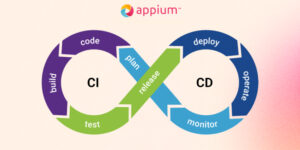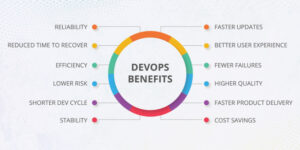
Businesses now see data as the new oil in their operations. In order to provide considerable economic value for an organisation, its data must first be stored, then cleansed, and then examined. Design data pipelines that provide a comprehensive strategy for ingesting data as well as processing it, one that takes into consideration all of the technological drivers that are necessary to effectively maximise on the enterprise’s data resources. All of these procedures, from exploratory data analysis to other business operations, where the development cycle boils down to simple and time-efficient accelerators, maybe speed up with the help of the utilities that data pipeline architecture has developed.
The Advanced Supply Chain Planning tool uses artificial intelligence to analyze data from various sources, such as sales forecasts and inventory levels, to predict demand and optimize production and inventory levels. This helps companies to be better prepared for changes in demand and to avoid stockouts or overproduction.
Why creating data pipeline is significant?
In the competitive business environment of the contemporary day, having access to reliable data is vital for assisting companies in developing superior plans and making well-informed choices. It enables firms to take a strategic approach to their methods, provide evidence in support of their claims, discover answers to common issues, and evaluate how well a certain plan is working.
In addition to the benefits it offers, storing and accessing data is an important activity that involves a number of different activities. And this is just where Data Pipeline shows to be of the most use.
Data Pipeline makes it possible for teams of data scientists to access data that is based on Cloud platforms. The technologies that make up a data pipeline are responsible for controlling data as it travels from its origin to its destination. It gives you the ability to gather data from a wide variety of sources so that you can generate useful insights and get a competitive advantage.
Even the most experienced data engineering might get easily overwhelmed by the huge volume, velocity, and variety of the data in a short amount of time. Because of this, companies use something called a data pipeline to transform raw data into information that is analytical and of high quality. Without the assistance of data engineering analytics solutions, it would be very impossible for businesses to make sense of the vast volumes of data at their disposal.
Data is the lifeblood of business
Companies that do not have access to reliable data will struggle to remain profitable. And if you work in the area of data engineering, you are aware of how critical it is to have accurate data.
If you have good data, you can create new goods and services more rapidly, improve your operations, and make choices that are based on accurate information. To put it another way, data engineering is all about ensuring that the appropriate data is stored in the appropriate location at the appropriate time.
In order to do this, you will need to have an in-depth knowledge of data structures, data mining, and data analysis. Because you also need to be able to communicate successfully with your stakeholders, you should have great written and spoken communication skills. This is why good data engineering skills incorporate strong communication abilities.
Overall, data engineering is an important topic that will have a significant influence on the direction that the company will take in the future. Learn data engineering, then, if you want to keep one step ahead of the competition.
The use of data pipeline may assist you in enhancing the overall performance of your company by assisting you in to:
1. Gain understanding through analysing the data
Extracting useful insights from your data via data engineering may help you improve the quality of the choices you make. This may involve things like calculating the optimal timing to introduce a new product, knowing the rates at which customers repurchase products and a variety of other things.
2. Transform data into useable representations
Data engineering is a process that may assist you in transforming your data into forms that are more helpful for the purposes of analysis and modelling. This may involve things like turning text into numerical numbers, processing data into graphs and charts, and far more.
3. Analyze and model data
You may improve the quality of the judgements you make with the assistance of data engineering, which can help you evaluate and model data. This may involve things like anticipating future trends, predicting the behaviour of customers, and other similar activities.
The article also mentions that creating a data pipeline allows to track and manage suppliers so that companies can identify and manage risks within their supply chain. This includes being able to track supplier performance, identify potential issues and take action to resolve them before they become major disruptions.
Conclusion
There are a few reasons why data engineering is so crucial. The fact that data engineering is a process that involves gathering, cleaning, converting, loading, and maintaining data is among the most important of these factors. Data engineering analytics solutions are very necessary in order to guarantee the precision and dependability of the data that is used inside your company. In a nutshell, data engineering is very necessary for the successful delivery of applications and services in an environment that utilises DevOps.
Overall, a data pipeline can help companies to be more resilient in the face of supply chain disruptions by providing them with the tools and insights they need to anticipate and respond to changes in demand and supply. By using data pipeline tools, companies can improve their supply chain efficiency, reduce costs and increase customer satisfaction.






